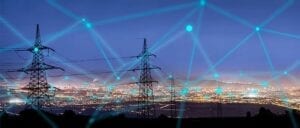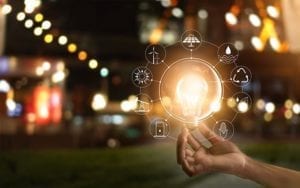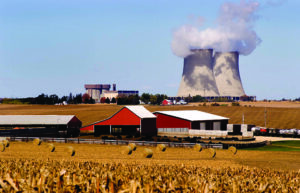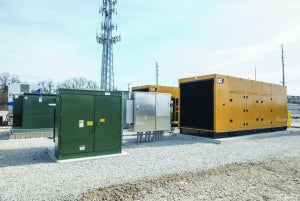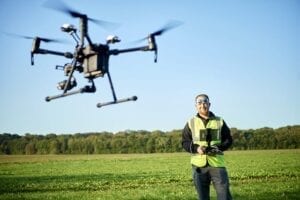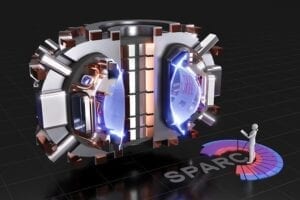POWER Podcasts
-
POWER Podcasts
Solar Energy in the Sunshine State: FPL Leads the Way
Florida is known as “The Sunshine State,” so it’s no surprise that solar energy is growing rampantly across the state. Among the utilities adding solar resources to their energy mixes is Florida Power and Light Co. (FPL). FPL claims to be the largest energy company in the U.S. as measured by retail electricity produced and […]
-
POWER Podcasts
Is It Safe to Invest in Mexican Energy Projects?
In late 2013, Mexico embarked on a path to transform its energy markets. Then-President Enrique Peña-Nieto oversaw constitutional reforms that ended state-run monopolies, and opened Mexico’s power market to competition and investment from foreign and private companies. By most accounts, the policies were highly effective in spurring investments in renewable energy and efficient natural gas-fired […]
-
POWER Podcasts
Are 1-in-10-Year Events Really 1-in-10-Year Events Anymore?
When evaluating resource adequacy requirements, many power companies and grid operators have used a methodology that originated more than 70 years ago. This probabilistic reliability approach has generally performed adequately through the years. It has generally evaluated loss-of-load events occurring at frequencies of one-day-in-10-years (1-in-10) to be acceptable in terms of system reliability. However, it’s […]
-
POWER Podcasts
Battery Technology Used in Outer Space Could Be a Gamechanger on Earth
Lithium-ion has become the dominant battery technology used in energy storage applications around the world, but that doesn’t mean it’s the only, or even the best, technology available. Many companies are working on different battery chemistries that could provide safer, longer-lasting, and ultimately more cost-effective options. One alternative that has gotten little exposure until now […]
-
POWER Podcasts
Hydrogen and the Energy Transition
Power systems around the world are changing. Renewable energy, mainly in the form of wind and solar generation, is being added everywhere, while more traditional forms of power, such as coal-fired and nuclear generation, are being retired from the grid. Meanwhile, natural gas-fired generation has taken the lead role in facilitating the transition by providing […]
-
POWER Podcasts
Dirty Electricity, but Not the Kind You Think
When most people hear the term “dirty electricity,” they probably think of power generated from sources considered more-polluting, such as coal, natural gas, or other fossil fuels. However, Satic Inc., an electronics manufacturer and professional engineering firm based in Missoula, Montana, says electricity in homes and businesses is filled with “electrical pollution” that is not […]
-
POWER Podcasts
Is Nuclear Power Poised for a Resurgence?
Since 1990, nuclear power has consistently supplied about 19% to 20% of the electricity used in the U.S. However, very few nuclear plants have been added to the U.S. fleet over that time. Currently, the only new nuclear project in the U.S. is Southern Company’s Plant Vogtle expansion, which is expected to add two new […]
-
Electric Vehicles
Bigelow Tea Enhances Sustainability with a Vehicle-to-Grid System
Sustainability is a buzzword that’s being bantered about up and down Wall Street, and corporate leaders have taken notice. Many companies have adopted environmental, social, and governance (ESG) initiatives, which are often tied to sustainability goals. In some cases, the pressure to do so has come from customers and/or investors, but in others, CEOs and […]
-
POWER Podcasts
The POWER Podcast Archive Vol. 3
The POWER Podcast is available through Apple Podcasts, Spotify, YouTube, YouTube Music, Amazon Music, iHeart, TuneIn, SoundCloud, and some other podcast apps. Follow the links below to subscribe via your favorite platform: Apple Podcasts Spotify YouTube YouTube Music Amazon Music iHeart TuneIn SoundCloud The POWER Podcast Archive (March 19, 2020 – Jan. 21, 2021) Is […]
-
POWER Podcasts
Is a Microgrid Right for You?
A microgrid is a discrete energy system consisting of distributed energy resources, such as solar panels, wind turbines, backup generators, and battery storage systems, and loads capable of operating in parallel with, or independently from, the main power grid. A microgrid generally operates while connected to the grid, but importantly, it can break off and […]
-
Connected Plant
Enhancing Operations and Maintenance with an EAM System
Enterprise asset management (EAM) involves a combination of software, systems, and services that are used to maintain and control operational assets and equipment. The aim is to optimize the quality and utilization of assets throughout their lifecycle, increase uptime, and reduce costs. EAM involves work management; asset maintenance; planning and scheduling; supply chain management; and […]
-
POWER Podcasts
Improving Asset Inspections with Drones and AI
The U.S. bulk electric system consists of more than 360,000 miles of transmission lines, including approximately 180,000 miles of high-voltage lines, according to the U.S. Department of Energy. That means power companies have a lot on their plates when it comes to inspecting and maintaining those assets. Furthermore, the stakes are high. As wildfires in […]
-
POWER Podcasts
Engineering Technicians and Technologists Are an Important Industry Pillar
According to Cheryl Farrow, CEO of the Ontario Association of Certified Engineering Technicians and Technologists (OACETT), there are three basic pillars that make up the engineering field. They are licensed engineers, technicians and technologists, and skilled trades. “We can’t be successful without all three of these pillars working together effectively,” Farrow said as a guest […]
-
Nuclear
A Hopeful Narrative for the Nuclear Industry
Although there is only one nuclear power plant construction project in progress today in the U.S., that doesn’t mean the nuclear industry has gone dormant. A lot of research and development are ongoing, and the federal government is putting millions of dollars behind some of the efforts. The Advanced Reactor Demonstration Program “The Department of […]
-
POWER Podcasts
Could Geothermal Energy Become the ‘Sexy’ Renewable?
Geothermal is an often-overlooked and even disregarded renewable energy resource. While new wind and solar energy projects garner headlines nearly every day, geothermal is rarely sighted in news feeds. That could change in the future. In a report issued last year, the U.S. Department of Energy said geothermal electricity generation could increase more than 26-fold […]
-
POWER Podcasts
Clean Energy Tech Company Offers Customers Renewable Options
There is a growing trend toward clean energy around the world. A number of high-profile companies, including Google, Apple, Walmart, and more than 260 others, have set 100% renewable electricity goals, and power companies, too, have joined in the movement, with many targeting net-zero emissions in coming decades. However, most consumers have found it more […]
-
Renewables
Developments in Offshore Wind Technology
By some estimates, offshore wind energy has the potential to deliver 18 times the current global electricity demand. The International Energy Agency (IEA) has said offshore wind power could develop into a $1 trillion industry over the next two decades, so there’s obviously a lot of growth potential around the world. While the cost for […]
-
Nuclear
Fusion Power May Be Closer Than You Think
Fusion research and development have been ongoing for decades, and many people probably believe a fusion power system will remain out of reach for decades longer. But the truth is that more than 100 tokamaks have been constructed and the science behind fusion is well-understood. What has been elusive is generating net energy from a […]
-
Energy Storage
Developing a Safer Lithium-Ion Battery
Most consumers know that lithium-ion (Li-ion) batteries can get hot. People experience the phenomenon in devices such as cell phones and laptop computers. In extreme circumstances, the heat can cause fires with catastrophic consequences. One company that is working to remedy the problem is Burlington, Washington-headquartered LAVLE. The company’s COO Morten Pedersen and CTO Ben […]
-
POWER Podcasts
Taking Lithium-Ion Batteries to the Next Level
Although the first lithium-ion (Li-ion) battery was conceived more than 50 years ago, the technology continues to be refined and improved today. Scientists and engineers are constantly modifying and testing electrolytes, anodes, and cathodes in an effort to make Li-ion batteries more energy-efficient, cost-effective, and safer. Chicago, Illinois-based NanoGraf Technologies is one company working to […]
-
Smart Grid
Leaders in the Smart City Movement
What is a “Smart City”? According to one definition, it’s an urban area that uses different types of electronic methods and sensors to collect data, with insights gained from that data used to manage assets, resources, and services efficiently. Clint Vince, chair of Dentons’ U.S. Energy Practice and co-chair of Dentons’ Global Energy Sector, was […]
-
POWER Podcasts
Is Carbon Capture Technology a Viable Solution?
Carbon capture utilization and storage (CCUS) is widely viewed as a necessary technology to facilitate the continued use of fossil fuels in light of climate change concerns around the world. One company that has been highly focused on CCUS research and development, as well as deployment of the technology, is Mitsubishi Heavy Industries (MHI). Tiffany […]
-
POWER Podcasts
Sustainable Building at Heart of Collaborative Project
The South Landing project in Spokane, Washington, has been called “the five smartest city blocks in the world.” The development is said to feature “the most sustainable large building in North America.” Known as the Catalyst Building, it is intended to anchor a planned “innovation hub.” The five-story, 150,000-square-foot building features two wings around a […]
-
POWER Podcasts
How to Find the Lowest-Cost Option for Electricity in Competitive Markets
How electricity is delivered to customers in the U.S. is complicated. Consumers in some states have no choice who supplies their power; state commissions regulate utilities as vertically integrated electricity providers. Other states utilize a competitive model in which power producers can openly access transmission infrastructure and participate in wholesale electricity markets. Yet, there isn’t […]
-
POWER Podcasts
Amicarella ‘Demystifies’ the Role of CEO for Women
The power generation industry has historically been a male-dominated industry, but today there are a number of women who have risen through the ranks to positions of leadership. Ana Amicarella, CEO of EthosEnergy, is one of them. EthosEnergy is a leading independent service provider of rotating equipment services and solutions to the power, oil and […]
-
POWER Podcasts
Using Autonomous Drones in the Power Sector
Drones, or unmanned aerial vehicles (UAVs), have been dabbled with throughout the power industry for years. POWER featured a drone on its cover in April 2014, and has published many articles on drone technology since then. Yet, the technology has been used more as a novelty in the power sector up to this point. As […]
-
POWER Podcasts
What Is DERMS and How Can It Help Utilities?
A distributed energy resource management system, or DERMS, is a software platform used to manage a group of distributed energy resource (DER) assets—such as rooftop photovoltaic solar panels, behind-the-meter batteries, or a fleet of electric vehicles—to deliver vital grid services and balance demand with supply to help utilities achieve mission-critical outcomes. As a guest on […]
-
T&D
The Importance of a Resilient Power System
It’s hurricane season in the U.S., which runs from June 1 through the end of November, and there have already been three named storms. The most recent was Tropical Storm Christobal, which was the earliest third-named Atlantic storm on record when it formed on June 2. It made landfall in the U.S. along the northern […]
-
O&M
Tips for Check Valve Selection and Installation
Check valves are installed in many piping systems. Their purpose is to allow flow in only one direction, which can be critical for plant safety and to protect equipment from damage. There are a few different check valve designs, including swing check valves and spring-loaded poppet-style check valves. Understanding which type is best for a […]
-
Safety
Understanding the Dangers of Hydrogen Sulfide Gas
Hydrogen sulfide (H2S) gas is produced as a result of the microbial breakdown of organic materials in the absence of oxygen. It can be found in tanks, vaults, voids, and other confined spaces at industrial facilities including power plants. Besides being flammable and corrosive, H2S is also colorless and toxic, even in relatively low concentrations, […]



